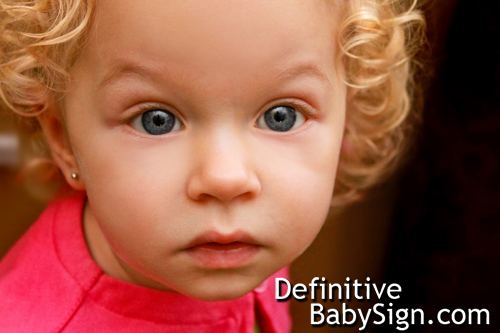 The sign for HELP in ASL is done by dropping the closed fist with thumb up onto an open palm and then raising both together. I sincerely tried to teach the accurate version despite my research that suggested alternative signs for babies. A lot of early research, in fact, suggested that signing parents use many different signs from ASL, and for good reason. Many ALS signs are approximated by babies because they are hard for them to do. I suppose the point is that many signs are still recognizable when approximated from ASL. This is with the one notable, and important exception – the sign for HELP.
The sign for HELP in ASL is done by dropping the closed fist with thumb up onto an open palm and then raising both together. I sincerely tried to teach the accurate version despite my research that suggested alternative signs for babies. A lot of early research, in fact, suggested that signing parents use many different signs from ASL, and for good reason. Many ALS signs are approximated by babies because they are hard for them to do. I suppose the point is that many signs are still recognizable when approximated from ASL. This is with the one notable, and important exception – the sign for HELP.
So having tried to do the correct route for some time, I accepted the early wisdom and dropped the true ASL sign in favour of the baby sign version which is suggested as both open palms patting the chest. Most of the more recent teachings on baby sign language favours this as an acceptable alternative because of the signs importance and difficulty. When I taught me son the real ASL sign, he never even bothered to try to model it himself. I still knew when he wanted help, that much was obvious, and he had learned over 80 signs by the time we finally gave up, so it’s not like he didn’t “get signing” – because he did. The point was that this one sign is very hard for a baby to do and sometimes, no matter how ardent you are on staying true to ASL, sometimes you have to be flexible and reasonable with your signing. After three or four tries with hands patting the chest nearing his 16th month, he had picked up the new sign like is was commonsense. It was really that easy. Any other time I tried to teach him the ASL sign for HELP, he’d look at me with funny eyes and essentially dismiss it. If you still want to try to teach HELP using ASL, by all means go for it. Eventually your little guys is going to pick it up, but it might take a bit longer than you have patience for. It’s also such an important sign that you might just want to bend on this one.
